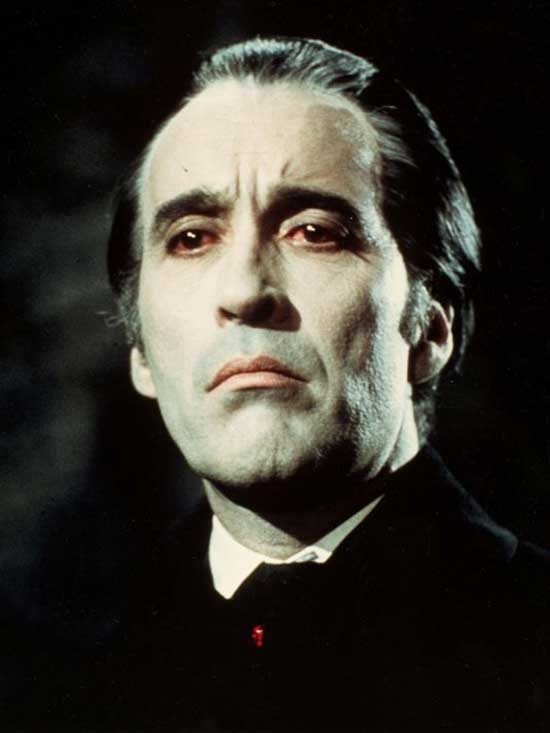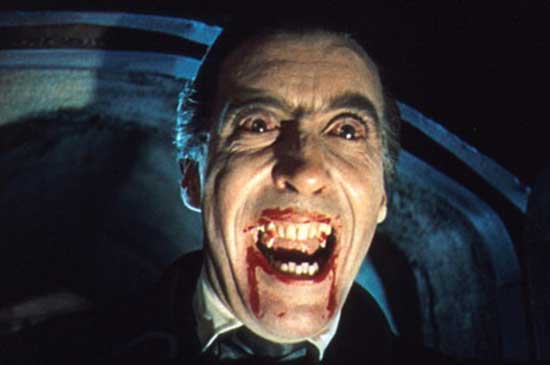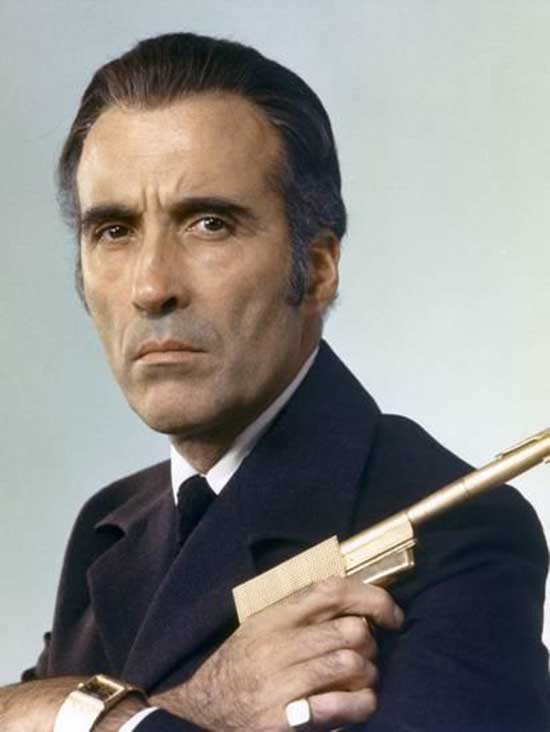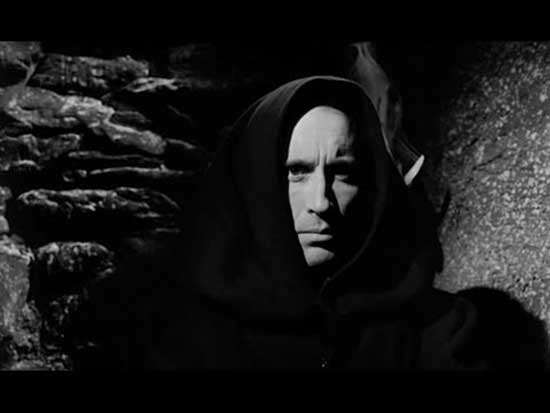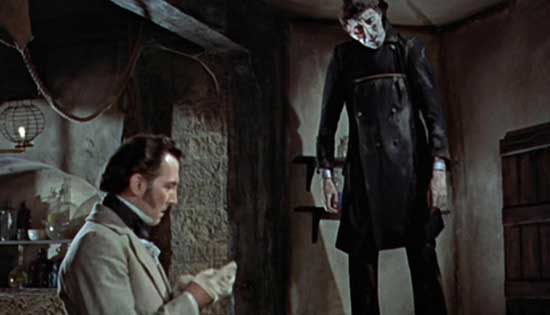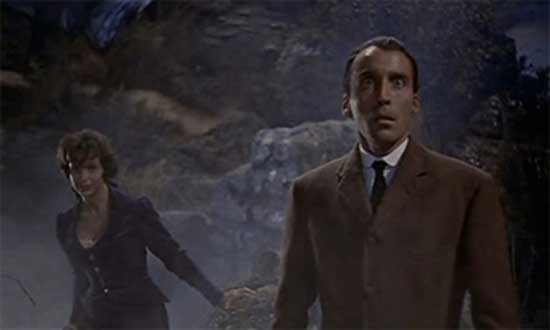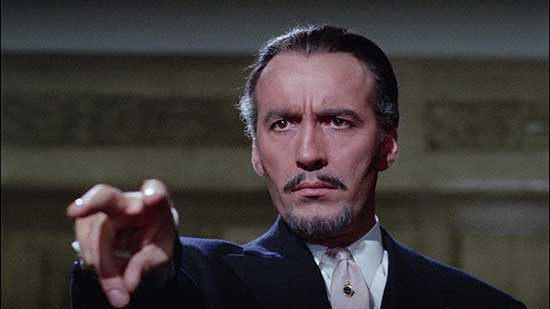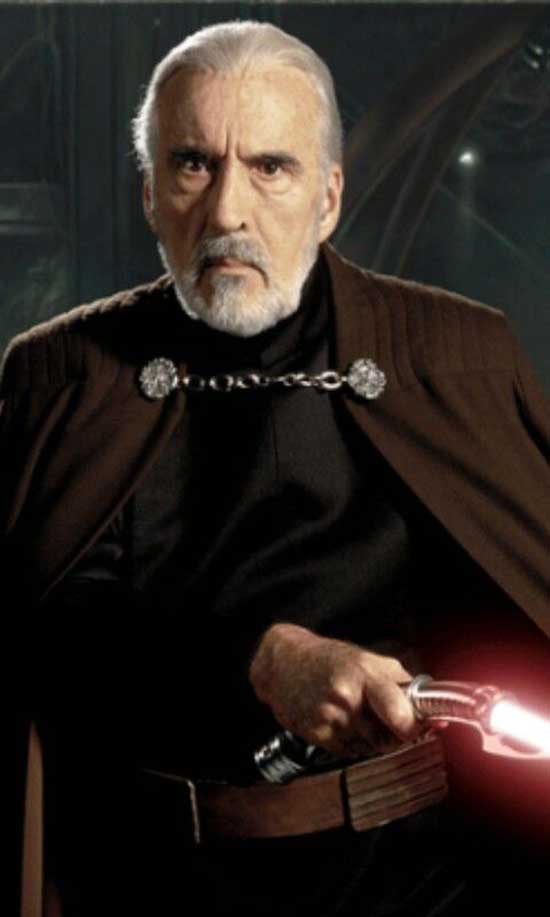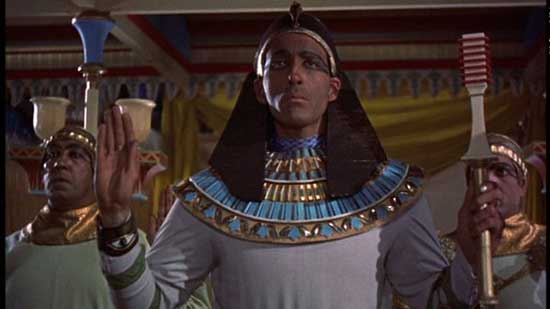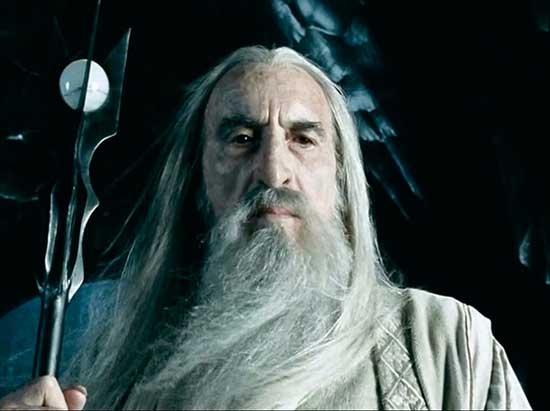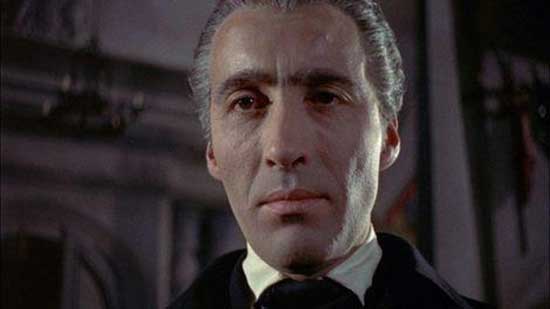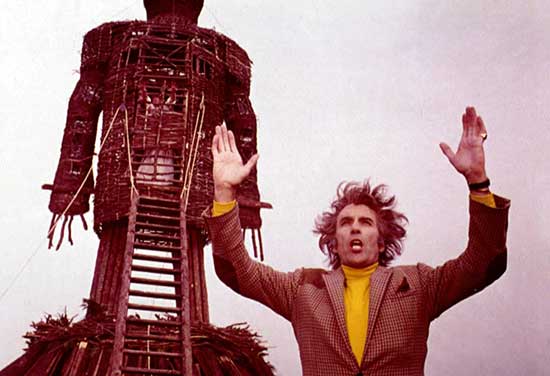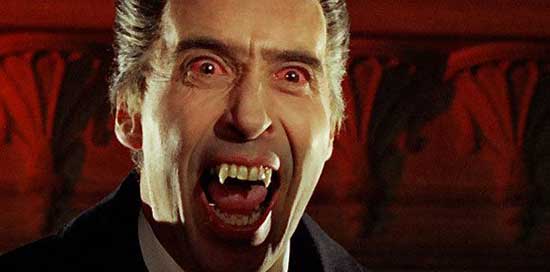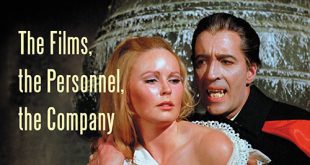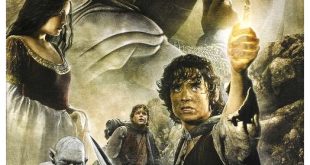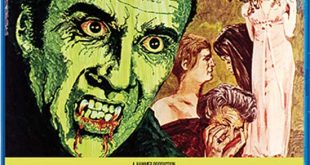Let’s face it, if I really wanted to do justice to a list of the ten best films featuring the late Sir Christopher Lee, I would have had to watch three movies per day for almost three months. (The man has 280 credits to his name in his IMDb filmology. This doesn’t include the music videos he made with various heavy metal rock bands in the late 2000s-early 2010s.)
Since I wasn’t willing to invest that amount of time into researching this article, I scoured through film forum comments and the like for clues to the films/performances that are the most consistent favorites among Lee’s legions of fans. Then I watched the films that were recommended.
Note: I filtered out his performances in films that are not in the horror or thriller/fantasy genre, because, after all, this is a horror news site. According to Lee himself, he considers his best work to have been a biopic, Jinnah (1998), where he played Mohammed Ali Jinnah, the founder of modern Pakistan. Clips on YouTube of Lee as Jinnah do show that he turned in a remarkable performance. He also kicked butt in the little-known film, The Disputation (1986), where he played the King of Spain, trying to broker a medieval theological discussion between a leading Christian theologian and a leading Jewish one. And he excelled as Rochefort in the very popular Three Musketeers films of the 70s.
An unlikely actor who dreamed of being an opera star like his famous great-grandmother, Marie Carandini, Lee had a remarkable career. It lasted right up until he died in 2015 at the age of 93. He often said he preferred to “die with my boots on,” like his friend and fellow horror legend, Boris Karloff.
In the beginning, his career sputtered for a good 10 years, consisting mostly of small roles in British war films and costume dramas. At 6’ 5”, he was considered far too tall for leading roles; most actors refused to work with him because he made them look short. He was also turned down because of his dark, Mediterranean features, which weren’t in vogue in British films of the 40s and 50s. (He was half-Italian.)
All that changed when Sir Chris was cast as The Creature in a 1957 reboot of the Universal Studios’ Frankenstein franchise by Hammer Films. In that role at least, his uncommon height was considered an asset, not a liability. While working on that film, he met two very great influences: Terence Fisher, the top director at Hammer, and Peter Cushing, his life-long friend and co-star, with whom he would make more than 20 films. (His friendship with Cushing lasted until the actor passed away in the early 1990s.) Fisher, for his part, would cast Lee in one of his greatest roles—Dracula–and in many other films, up until the late 60s.
Beginning in the 80s, as Hammer-type horror was waning, Lee started to accept more roles in mainstream films, such as Steven Spielberg’s flop comedy, 1941 (1979). It wasn’t, however, until he was cast as Saruman the White, the villain in Peter Jackson’s blockbuster Lord of the Rings trilogy of the early 2000s, that he achieved true A-list acting status. He was almost 80 years old.
Offers flooded in by the bucket after that, and the 2000s became one of his busiest decades, even though he was in his 80s. At the end of that eventful decade, in 2009, he was knighted by Queen Elizabeth II. (He had always been nobility, however, since his mother was an Italian countess.)
With all that in mind, here’s my list of the Top 10 films featuring the great Sir Christopher Lee:
- The Man With the Golden Gun (1974), directed by Guy Hamilton; starring Lee, Roger Moore, Britt Ekland, Maude Adams and Herve Villechaize. This isn’t the best Bond movie, but it features one of the best Bond villains, in Francisco Scaramunga, excellently played by Lee with cheerful, smiling menace.
Scaramunga is an internationally renowned hit man who uses a gold-plated gun and gold bullets to make his kills. When Scaramunga’s girlfriend (Adams) sends a signature gold bullet to British intelligence inscribed with the number 007, Bond sets off to find him; the usual silliness of the Roger Moore-era Bond ensues, as the chase continues across several continents before Scaramunga is finally dispatched. The over-long film lags in the middle and becomes tedious, but the performances of Lee and Herve Villechaiz (as Scaramunga’s diminutive henchman) rescue it in the last 30 minutes or so. Fun fact: Lee’s stepfather was the uncle of Ian Fleming, the creator of Bond. Lee once told an interviewer that Scaramunga was the name of a real person who’d attended boarding school with Fleming, one whom Fleming greatly disliked.
- The City of the Dead (1960) AKA Horror Hotel, directed by John Lewellyn Moxey, starring Lee, Betta St. John, Venetia Stevenson, Patricia Jessel, and Denis Lotis. Lee plays Alan Driscoll, a sinister history professor at a small college in New England, in this atmospheric, b&w tale of witchcraft.
Secretly an immortal warlock, Driscoll sends a student, Nan Barlow (Stevenson), to a remote town in rural Massachusetts to study witchcraft practices for a term paper. When Nan disappears, her brother (Lotis)— a rival colleague of Driscoll’s —and her boyfriend drive to the town to investigate. They put their own lives in danger, as the town is actually occupied by immortal witches who sacrifice young women to the devil to stay alive. Lee essays an upper-class American accent fairly well, and imbues his character with his usual dominating intensity. The shadowy cinematography by Desmond Dickinson (who shot the legendary 1948 version of Hamlet starring Laurence Olivier) and creepy score by Douglas Gamely and Ken Jones really add to the atmosphere.
- The Curse of Frankenstein (1957), directed by Terence Fisher for Hammer Films; starring Lee, Peter Cushing, and Hazel Court. This was Lee’s first role in horror, playing The Creature opposite Cushing as Baron Von Frankenstein. Lee doesn’t do much more than lurch around and look menacing, while Cushing carries the film, but he does it well. He also looks nothing like Old Squarehead Boris Karloff as The Creature, for good reason: Universal Studios threatened to sue if Hammer’s Creature looked anything like Karloff as theirs. So Lee in this film just looks like a more demented version of Edward Scissorhands. Like most of Fisher’s Hammer films, this film is quite colorful (shot in brilliant Eastmancolor), and it especially shows in the flashy gowns worn by Hazel Court as the Baron’s fiancé. This film was a big departure from the dark, gloomy horror films of the past. The Curse of Frankenstein was a smash hit, leading to more Hamer roles for Lee, often working with Fisher and Cushing.
- The Hound of the Baskervilles (1959), directed by Terence Fisher, starring Lee, Peter Cushing, Andre Morell, and Marla Landi. Yet another collaboration of Lee, Cushing and Fisher, this is one of the best-ever versions of the oft-filmed Sherlock Holmes tale. Lee plays Sir Henry Baskerville, who has inherited his uncle’s grand estate on the Devonshire Moors. Cushing is Holmes, called in to investigate the mysterious death of Sir Henry’s uncle, ostensibly at the hands of a giant supernatural hound that has haunted the Baskerville family for more than 100 years. Lee actually gets to talk in this one and he does pretty well as the brooding aristocrat who believes he’s living under a curse. Like most of the Terence Fisher Hammer films, this one features brilliant Technicolor filmwork, lots of detail, and lavish sets. On disc and streaming.
- The Devil Rides Out (1968), directed by Terence Fisher; starring Lee, Patrick Mower, Charles Gray, and Leon Greene. Based on a novel by horror/occult writer Dennis Wheatley, this film is one of Lee’s most popular Hammer productions that isn’t a Dracula film. And for once, he plays “the good guy,” instead of a villain.
Sir Christopher portrays the Duc de Richleau, a French nobleman who lives in England and studies the occult. When the Duc’s godson, Simon (Patrick Mower), falls under the sway of a devil-worshipping cult, he springs into action to battle the cult’s leader, Mocato (Charles Gray) for Simon’s body and soul. This film is more of an action film than a slow-burner, as Lee and a friend give chase to Mocato all around England, including a secret visit to a wooded grove where Satan appears in the guise of a creature called The Goat of Mendes. The special effects are extremely dated, but Lee’s bravado performance as the derring-do Duc pushes the plot forward nicely. A big fan favorite, this is the last film Lee made with Terence Fisher. On disc.
- Star Wars, Episode III: Revenge of the Sith (2005), directed by George Lucas; starring Lee, Ewan McGregor, Hayden Christensen, Ian McDiarmid, Natalie Portman, and Samuel L. Jackson. This is the best of the three Star Wars prequels that debuted in the late 90s-to-mid-2000s. Once again cast as a titled aristocrat, Lee reprises his role as Count Dooku, the former Jedi Knight turned Sith Lord. He dies at the hands of Anakin Skywalker (Christensen) during a light sabre fight in one of the film’s best scenes. Despite being 83 when this film debuted, Lee is still able to convincingly play a powerful adversary and swordsman (albeit probably with the help of a double during the most strenuous scenes.) On disc and streaming.
- The Mummy (1959), directed by Terence Fisher; starring Lee, Peter Cushing, Yvonne Furneaux, George Pastell, and Raymond Huntley. Another Hammer collaboration of Lee, Cushing and Fisher, this one is also brilliantly colored and deftly directed. Lee plays Kharis, an ancient Egyptian priest who was walled up in the tomb of a beautiful princess he loved.
Cushing plays a member of a late 19th Century British archaeology team who uncover the princess’s tomb and accidentally revive the mummy of Kharis. A fez-wearing Egyptian cultist (Pastell) gains control of the mummy and brings him to England to exact revenge from the team for desecrating the tomb. Lee manages to create a sympathetic character out of the mummy despite having no lines, mainly by staring with sad-puppy-dog eyes out of his moldy, mummy mask.The brilliant Technicolor film makes Cushing’s blue eyes look like two bright lumps of melted, cornflower-blue Crayola crayons, among other startling effects. On disc and streaming.
- The Lord of the Rings Trilogy: The Fellowship of the Ring (2001) and The Two Towers (2002), directed by Peter Jackson; starring Lee, Ian McKellen, Vigo Mortensen, Elijah Wood, Cate Blanchett, and others. Lee achieved far greater international stardom than he could have imagined back in his Hammer days when he was cast as Saruman, the main villain in Peter Jackson’s epic trilogy, based on the dark fantasy novels of J. R. R. Tolkien. (Fun fact: Lee actually knew Tolkien.)
Lee was almost 80 when he first played the role of the evil wizard who dreams of ruling Middle Earth. However, his deep, booming voice is still as powerful as ever he rouses his troops into battle and verbally duels with McKellen as Gandalf. (He also provided voiceovers for numerous video games based on the LOTR books.) The first two legs of the trilogy feature his most dominating performances; most of his scenes were cut from the third film’s theatrical release, much to Lee’s disgust, although they were restored in the DVD extended release. On disc and streaming.
- Horror of Dracula (1958), directed by Terence Fisher; starring Lee, Peter Cushing, Michael Gough, and Melissa Stribling. Lee’s first foray into the Count’s crypt remains his best; he would play Dracula nine more times after this one. Of all the actors who’ve portrayed Bram Stoker’s vampire onscreen for nearly 100 years, only Bela Lugosi is more identified with the character than Lee. In this version, which put Hammer on the map, Jonathan Harker is a well-known literary scholar who arrives at Drac’s castle in Transylvania to take a paid post as Drac’s personal librarian. Contrary to the book, Harker already knows that Drac is a vampire and has come to destroy him, but Drac turns the tables on Harker and he ends up being vamped himself.
Enter Peter Cushing as Van Helsing to finish the job Harker couldn’t deliver. This production features plenty of expertly plotted suspense, especially the famous scene leading up to Harker’s demise. In the early scenes, Lee plays Drac as a typical polite, chilly aristocrat, who switches to a relentless, feral beast when in vamp mode. His height is used to great advantage in scenes where he towers over his victims. On disc and streaming.
1.The Wicker Man (1973), directed by Robin Hardy; starring Lee, Edward Woodward, Britt Ekland, and Ingrid Pitt. This is one of the greatest horror movies ever made and was Lee’s favorite of all the films he did over his extraordinarily long career. As Lord Summerisle, Sir Chris portrays the sinister but charming ruler of an island off the coast of Scotland, where the residents have cast off Christianity and embraced the pre-Christian religious beliefs of the British Isles. Woodward plays Sargent Howie, a policeman from the mainland sent to the island to investigate the disappearance of a young girl named Rowan. Soon, the Sargent becomes convinced that Rowan was sacrificed by the islanders in a pagan ritual. By the end of the film, the real sacrifice is revealed—in a scene that still shocks some 45-years after The Wicker Man was released. On disc and streaming; avoid the 2006 remake like the plague.
Honorable Mention:
Dracula Prince of Darkness (1966), directed by Terence Fisher; starring Lee, Barbara Shelley, Andrew Weir, and Francis Matthews. Lee’s second stint as Dracula leaves behind nearly all of the Bram Stoker book, and introduces the audience to a whole new set of characters. It begins with a flashback to the death of Drac at the hands of Peter Cushing as Van Helsing in Horror of Dracula (1958), but otherwise Cushing does not appear. Instead, two brothers and their wives are traveling through the Carpathian mountains by coach when their coachman abruptly stops and dumps them off in the middle of the forest. They are planning to spend the night in an old shack in the woods when a driverless coach and horses appear, who take them to Dracula’s castle. There, a servant drains the blood of one of the brothers and uses it to resurrect Dracula’s ashes. Then Drac (played by Lee) starts to pursue the others. This film drags in the beginning and Dracula doesn’t even show up until 40 minutes into the film, but it’s still a fine addition to the Lee-Dracula cannon. On disc and streaming.
Dr. Terror’s House of Horrors (1965), directed by Freddie Francis, starring Lee, Peter Cushing, and Donald Sutherland. Despite the hokey title, this Amicus film is an excellent anthology feature, consisting of five different segments. Cushing plays a mysterious old man traveling in a train compartment with five other passengers, including Lee as Franklyn Marsh, a snobbish art critic who constantly ridicules the old man. To pass the time, he offers to read each passenger their fortune with tarot cards, and this sets up each segment. Lee stars in one of the strongest stories, as Marsh cruelly torments an artist to suicide, and then is stalked by the artist’s severed hand. Funny and creepy, with Lee doing subtle comedy as the rude critic. On disc.
The Whip and the Body (1963), directed by Mario Bava (under the name of John M. Old); starring Lee, Dahlia Lavi, Tony Kendall, and Evelyn Stewart (as Isli Oberon). This film is notable for being Lee’s only film with the great Italian horrormeister, Mario Bava. He plays Kurt Menliff, the black sheep of an aristocratic Eastern European family, who returns to the family castle after a long sojourn away. He resumes his kinky affair with his brother’s wife, Nevenka (Lavi), which features some S&M scenes (a bit shocking for the era), until he turns up murdered. But that’s not the end of Kurt. The plot is a bit thin, but the film features that distinctive old Bava magic with lush cinematography provided partially by Bava himself, and a haunting score by Carlo Rustichelli (billed here as Murphy). On disc and streaming.
 Horror News | HNN Official Site | Horror Movies,Trailers, Reviews
Horror News | HNN Official Site | Horror Movies,Trailers, Reviews
